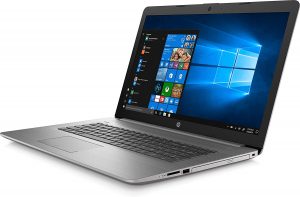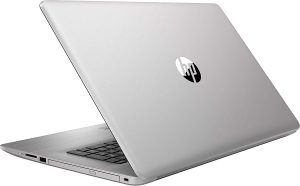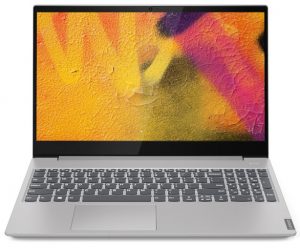HP 470 G7 review – a budget-quality chassis with a great display
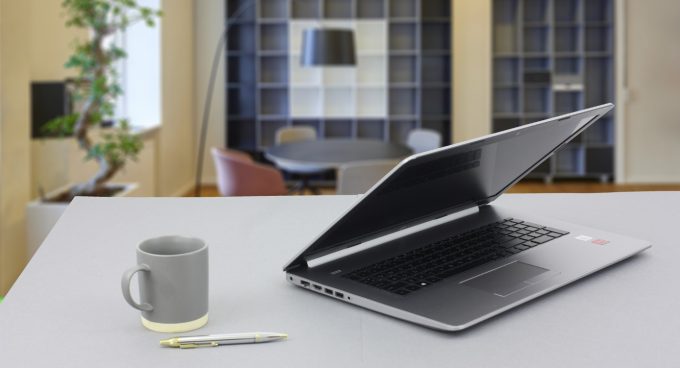 A laptop that is poised to look like a budget offering. Interestingly enough, it isn’t really budget-conscious, whatsoever. With a starting price of $880 (as of the moment of writing this review), this is a comparable price to the ProBook series – an “official” business notebook from HP. So, what are the intentions of HP with this one?
A laptop that is poised to look like a budget offering. Interestingly enough, it isn’t really budget-conscious, whatsoever. With a starting price of $880 (as of the moment of writing this review), this is a comparable price to the ProBook series – an “official” business notebook from HP. So, what are the intentions of HP with this one?
Well, if you close your eyes for the obvious lack of visual appeal, and look solely beneath the surface, you’ll see a pretty decent package. We are talking about a 1080p IPS option for the 17-inch display, a 10th Generation Comet Lake processor from Intel, as well as an AMD Radeon 530 optional graphics card. All of that is providing some decent performance with great energy efficiency. Let’s unbox this product, have some time with it, and see what exactly is the top-selling point, and what are the shortcomings of the device.
You can check the prices and configurations in our Specs System: https://laptopmedia.com/series/hp-470-g7/
Contents
Specs Sheet
- HDD/SSD
- 以至于 8000GB SSD + 以至于 2000GB HDD
- 内存
- up to 64GB
- 操作系统
- Windows 10 Pro, Windows 10 Home, No OS
- 蓄电池
- 41Wh, 3-cell
- 外形尺寸
- 414.8 x 272 x 24.5 mm (16.33" x 10.71" x 0.96")
- 重量
- 2.36 kg (5.2 lbs)
- 端口和连接性
- 1x USB Type-A
- 2.0
- 2x USB Type-A
- 3.2 Gen 1 (5 Gbps)
- HDMI
- 1.4
- 读卡器
- SD, SDHC, SDXC
- 以太网LAN
- 10, 100, 1000 Mbit/s
- Wi-Fi
- 802.11ax
- 蓝牙
- 5.0
- 音频插孔
- 3.5 mm combo
- 特点
- 指纹识别器
- optional
- 网络摄像机
- HD
- 背光键盘
- optional
- 麦克风
- 扬声器
- 2x
- 光驱
- optional
- 安全锁槽
全部 HP 470 G7 配置
What’s in the box?
Well, inside the package there is only a 65Wh power brick, some paper manuals, and the laptop, itself. At least, the device is very well protected by a hard foam.
Design and construction
Indeed, the build quality of this device isn’t perfect. It is entirely made out of plastic and the feel of the material feels pretty cheap. However, the body weighs around 2.36kg (5.20 lb), which is very good for a 17-incher. In terms of the height of the profile, it goes up to 24.5mm – also a nice value. However, the overall size of the device is huge. But why?
Well, because of the huge bezels. Not only the lid is incapable of opening with a single hand, but also, the big bezels surrounding the screen add up to a pre-2018 experience.
At least this gives a lot of space for a decent keyboard to be put in. Here, you can find a NumberPad-equipped unit, that has rather big keycaps and sadly – no backlight, if you don’t pay a premium, of course. On the bright side, the feedback is clicky, and the travel – long. This is a pretty comfortable keyboard for long typing sessions.
Now, on the other side of the coin – there is the touchpad. Although it has dedicated keys, they need a lot of force to press (perhaps a safety measure to keep your kids away?), and the tracking is pretty slow.
As the speakers are firing towards the user, the only thing you are going to encounter on the bottom panel would be the ventilation grill. Respectively, the hot air is exhausted from in between the lid and the base.
Ports
Most of the I/O here is found on the left. It includes the barrel-style power plug, an RJ-45 port, an HDMI 1.4, two USB 3.1 (Gen. 1) ports, and an audio jack. Then, on the right, you can see a USB Type-A 2.0 port and an SD card reader.
Disassembly, upgrade options and maintenance
Once again, HP has tried to hide most of its precious screws with the help of the rubber strips. However, they are easily removable with a flat-head screwdriver, or preferably a plastic tool. After you do that, remove all of the Phillips-head screws you see. Then, turn the laptop around and open the lid. This is where the prying process happens. Next, make your way around with a guitar pick, and remove the bottom panel from the chassis.
Inside, you’ll see a single, thick heat pipe, cooling both the CPU and the graphics card. Despite the fact we are talking about energy-efficient hardware, it is usually not a great idea to connect your two main heat sources.
In terms of upgradability, the 470 G7 is well packed. There are two RAM SODIMM slots, which support up to 16GB of DDR4 memory, working at 2666 MHz. Storage-wise, you can see an M.2 slot with PCIe x2 and SATA support, as well as a 2.5″ SATA drive bay.
As of the battery, there is a modest 41Wh unit, powering the huge 17-inch screen.
Display quality
HP 470 G7 is equipped with a Full HD IPS screen, model number BOE BOE077B. Its diagonal is 17.3″ (43.94 cm), and the resolution – 1920 х 1080. Additionally, the screen ratio is 16:9, the pixel density – 127 ppi, their pitch – 0.2 x 0.2 mm. The screen can be considered Retina when viewed from at least 69 cm (from this distance, the average human eye can’t see the individual pixels).

Its viewing angles are comfortable. We have provided images at 45 degrees to evaluate quality.

The maximum measured brightness is 283 nits (cd/m2) in the middle of the screen and 274 nits (cd/m2) average across the surface with a maximum deviation of 11%. The Correlated Color Temperature on a white screen and at maximum brightness is 7420K (average) – colder than the 6500K optimum for sRGB.
In the illustration below you can see how the display performs from uniformity perspective. The illustration below shows how matters are for operational brightness levels (approximately 140 nits) – in this particular case at 80% Brightness (White level = 143 cd/m2, Black level = 0.11 cd/m2).
Values of dE2000 over 4.0 should not occur, and this parameter is one of the first you should check if you intend to use the laptop for color-sensitive work (a maximum tolerance of 2.0 ). The contrast ratio is very good – 1270:1 (1070:1 after profiling).
To make sure we are on the same page, we would like to give you a little introduction to the sRGB color gamut and the Adobe RGB. To start, there’s the CIE 1976 Uniform Chromaticity Diagram that represents the visible specter of colors by the human eye, giving you a better perception of the color gamut coverage and the color accuracy.
Inside the black triangle, you will see the standard color gamut (sRGB) that is being used by millions of people in HDTV and on the web. As for the Adobe RGB, this is used in professional cameras, monitors, etc for printing. Basically, colors inside the black triangle are used by everyone and this is the essential part of the color quality and color accuracy of a mainstream notebook.
Still, we’ve included other color spaces like the famous DCI-P3 standard used by movie studios, as well as the digital UHD Rec.2020 standard. Rec.2020, however, is still a thing of the future and it’s difficult for today’s displays to cover that well. We’ve also included the so-called Michael Pointer gamut, or Pointer’s gamut, which represents the colors that naturally occur around us every day.
The yellow dotted line shows HP 470 G7’s color gamut coverage.
Its display covers 90% of the sRGB/ITU-R BT.709 (web/HDTV standard) in CIE1976, which provides a vibrant and punchy image.

Our “Design and Gaming” profile delivers optimal color temperature (6500K) at 140 cd/m2 luminance and sRGB gamma mode.
We tested the accuracy of the display with 24 commonly used colors like light and dark human skin, blue sky, green grass, orange, etc. You can check out the results at factory condition and also, with the “Design and Gaming” profile.
Below you can compare the scores of HP 470 G7 with the default settings (left), and with the “Gaming and Web design” profile (right).


The left side of the image represents the display with stock settings, while the right one is with the “Gaming and Web Design” profile activated. On the horizontal axis, you will find the grayscale and on the vertical axis – the luminance of the display. On the two graphs below you can easily check for yourself how your display handles the darkest nuances but keep in mind that this also depends on the settings of your current display, the calibration, the viewing angle, and the surrounding light conditions.

Response time (Gaming capabilities)
We test the reaction time of the pixels with the usual “black-to-white” and “white-to-black” method from 10% to 90% and vice versa.
We recorded Fall Time + Rise Time = 24 ms

Health impact – PWM / Blue Light
PWM (Screen flickering)
Pulse-width modulation (PWM) is an easy way to control monitor brightness. When you lower the brightness, the light intensity of the backlight is not lowered, but instead turned off and on by the electronics with a frequency indistinguishable to the human eye. In these light impulses, the light/no-light time ratio varies, while brightness remains unchanged, which is harmful to your eyes. You can read more about that in our dedicated article on PWM.
HP 470 G7’s display doesn’t use PWM for brightness adjustment. This makes it comfortable for long working periods, without being harmful to your eyes in this aspect.

Blue light emissions
Installing our Health-Guard profile not only eliminates PWM but also reduces the harmful Blue Light emissions while keeping the colors of the screen perceptually accurate. If you’re not familiar with the Blue light, the TL;DR version is – emissions that negatively affect your eyes, skin, and your whole body. You can find more information about that in our dedicated article on Blue Light.
Conclusions
HP 470 G7’s display has a surprisingly good IPS panel. Its resolution is Full HD and it has comfortable viewing angles and good contrast ratio. Additionally, it covers quite a wide amount of Internet colors with 90% sRGB coverage. If you install our Gaming and Web browsing profile, you could very well get into the Average dE standard of 2.0. Not only that, but the panel doesn’t flicker at any brightness level.
Buy our profiles
Since our profiles are tailored for each individual display model, this article and its respective profile package are meant for HP 470 G7 configurations with 17.3″ BOE BOE077B (FHD, 1920 × 1080) IPS.
*Should you have problems with downloading the purchased file, try using a different browser to open the link you’ll receive via e-mail. If the download target is a .php file instead of an archive, change the file extension to .zip or contact us at [email protected].
Read more about the profiles HERE.
除了获得高效和健康友好的配置文件,购买LaptopMedia的产品,您还可以支持我们实验室的发展,我们在实验室测试设备,以产生最客观的评论。

办公室工作
Office Work应该主要由那些花大部分时间看文本、表格或仅仅是浏览的用户使用。该配置文件旨在通过保持平坦的伽玛曲线(2.20)、本机色温和精确的色彩来提供更好的清晰度。

设计与游戏
本资料针对专业处理色彩的设计师,以及游戏和电影。设计与游戏》将显示面板发挥到了极致,使其在白点D65的网页和高清电视的sRGB IEC61966-2-1标准中尽可能准确。

以33%的折扣获得所有3份资料
Sound
HP 470 G7’s speakers produce a loud and clear sound with good quality. Its low, mid, and high tones are clear of deviations.

Drivers
All of the drivers and utilities for this laptop can be downloaded from here: https://support.hp.com/us-en/drivers/selfservice/hp-470-g7-notebook-pc/30887784
Battery
Now, we conduct the battery tests with Windows Better performance setting turned on, screen brightness adjusted to 120 nits, and all other programs turned off except for the one we are testing the notebook with.
为了模拟真实情况,我们使用自己的脚本自动浏览了70多个网站。
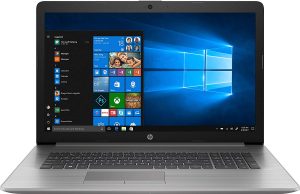
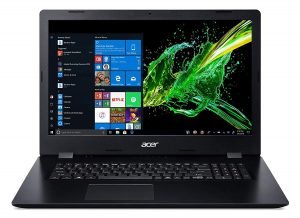
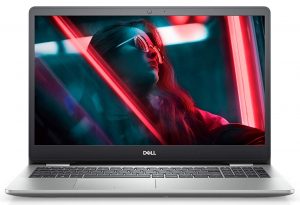
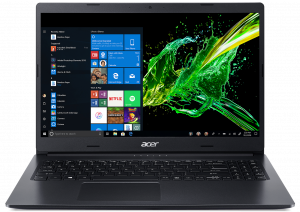
对于这样的每一次测试,我们都使用相同的高清视频。




CPU options
This device can be configured with a trio of Come Lake processors – the Core i3-10110U, the Core i5-10210U, as well as the Core i7-10510U.
GPU options
As far as the graphics are concerned, you can either stick to the integrated UHD Graphics, or you can pay a little premium to get the AMD Radeon 530, equipped with 2GB of GDDR5 memory.
Gaming tests

| DOTA 2 | HD 1080p, Low (Check settings) | HD 1080p, Normal (Check settings) | HD 1080p, High (Check settings) |
|---|---|---|---|
| AMD Radeon 530 | 94 fps | 53 fps | 25 fps |
Temperatures and comfort
Max CPU load
In this test we use 100% on the CPU cores, monitoring their frequencies and chip temperature. The first column shows a computer’s reaction to a short load (2-10 seconds), the second column simulates a serious task (between 15 and 30 seconds), and the third column is a good indicator of how good the laptop is for long loads such as video rendering.
Average core frequency (base frequency + X); CPU temp.
| Intel Core i5-10210U (15W TDP) | 0:02 – 0:10 sec | 0:15 – 0:30 sec | 10:00 – 15:00 min |
|---|---|---|---|
| HP 470 G7 | 3.09 GHz (B+93%) @ 70°C | 1.94 GHz (B+21%) @ 59°C | 1.97 GHz (B+23%) @ 67°C |
| Lenovo ThinkPad E15 | 2.47 GHz (B+54%) @ 76°C | 2.50 GHz (B+56%) @ 91°C | 1.97 GHz (B+23%) @ 79°C |
| HP Probook 450 G7 | 2.54 GHz (B+59%) @ 59°C | 2.12 GHz (B+33%) @ 67°C | 1.81 GHz (B+13%) @ 72°C |
| HP Probook 440 G7 | 2.68 GHz (B+68%) @ 59°C | 2.68 GHz (B+68%) @ 67°C | 2.20 GHz (B+38%) @ 72°C |
| Lenovo ThinkBook 15-IML | 3.08 GHz (B+93%) @ 73°C | 3.00 GHz (B+88%) @ 82°C | 2.55 GHz (B+59%) @ 80°C |
| Lenovo ThinkPad L13 | 3.04 GHz (B+90%) @ 97°C | 2.10 GHz (B+31%) @ 97°C | 2.12 GHz (B+33%) @ 79°C |
| ASUS ZenBook Duo UX481 | 3.26 GHz (B+104%) @ 94°C | 2.77 GHz (B+73%) @ 98°C | 2.06 GHz (B+29%) @ 71°C |
| Dell Vostro 5590 | 3.50 GHz (B+119%) @ 94°C | 2.68 GHz (B+68%) @ 97°C | 2.36 GHz (B+48%) @ 79°C |
A rather interesting solution from HP. They have implemented a short-termed 35W power limit. It goes on for around 15 seconds and then the processor levels out at 15W. Nevertheless, the temperatures are very well managed, despite the slightly loud fan noise.
Real-life gaming
| AMD Radeon 530 | GPU frequency/ Core temp (after 2 min) | GPU frequency/ Core temp (after 30 min) |
|---|---|---|
| HP 470 G7 | 920 MHz @ 76°C | 829 MHz @ 79°C |
| Dell Vostro 14 5471 | 990 MHz @ 68°C | 857 MHz @ 69°C |
Sadly, the aforementioned cannot be said when you play games. Not only do the frequencies throttle, but also, the temperatures are pretty high.
Comfort during full load
In addition to that, the fan is pretty loud under combined load and the temperature on the keyboard is a bit on the warm side.


Verdict
 Indeed, it was very suspicious to see a laptop that looks more or less like a budget offering, to be that expensive. If we have to be honest, we got some answers that are pretty satisfactory – decent performing hardware, cool internals, and a great display.
Indeed, it was very suspicious to see a laptop that looks more or less like a budget offering, to be that expensive. If we have to be honest, we got some answers that are pretty satisfactory – decent performing hardware, cool internals, and a great display.
In fact, HP 470 G7’s display has a surprisingly good IPS panel. Its resolution is Full HD and it has comfortable viewing angles and good contrast ratio. Additionally, it covers quite a wide amount of Internet colors with 90% sRGB coverage. If you install our Gaming and Web browsing profile, you could very well get into the Average dE standard of 2.0. Not only that, but the panel doesn’t flicker at any brightness level.
Additionally, the device is pretty flexible on the upgradability, with an M.2 NVMe drive support, dual-channel memory, 2.5″ SATA drive bay, and an SD card reader on the outside. However, we are puzzled why would HP go for a chassis with such poor quality. Okay, we might have overexaggerated, but the entire body is made out of plastic and is certainly not providing any premium feel, whatsoever.
Not only that, but there is no USB Type-C port to be found and the battery life falls just into the acceptable range – around 7 hours of Web browsing and 20 minutes less of video playback.
So, if the looks are not bothering you, and you need the visual experience provided by the display, sure – go for it. However, keep in mind that for roughly the same price, you can pick some decent gaming devices, which will provide pretty much the same display quality but with far more powerful hardware onboard.
Pros
- Energy-efficient hardware
- Covers 90% of sRGB and our Gaming and Web design profile helps it to an Average dE of 1.8
- Good contrast ratio and comfortable viewing angles (BOE NV140FHM-N49)
- Doesn’t use PWM to adjust its brightness (BOE NV140FHM-N49)
- SD card reader on board
- Dual-channel memory and NVMe drive support
Cons
- Poor build quality
- Lacks a USB Type-C port
- Dated design
- High price for what it offers
You can check the prices and configurations in our Specs System: https://laptopmedia.com/series/hp-probook-470-g7/

